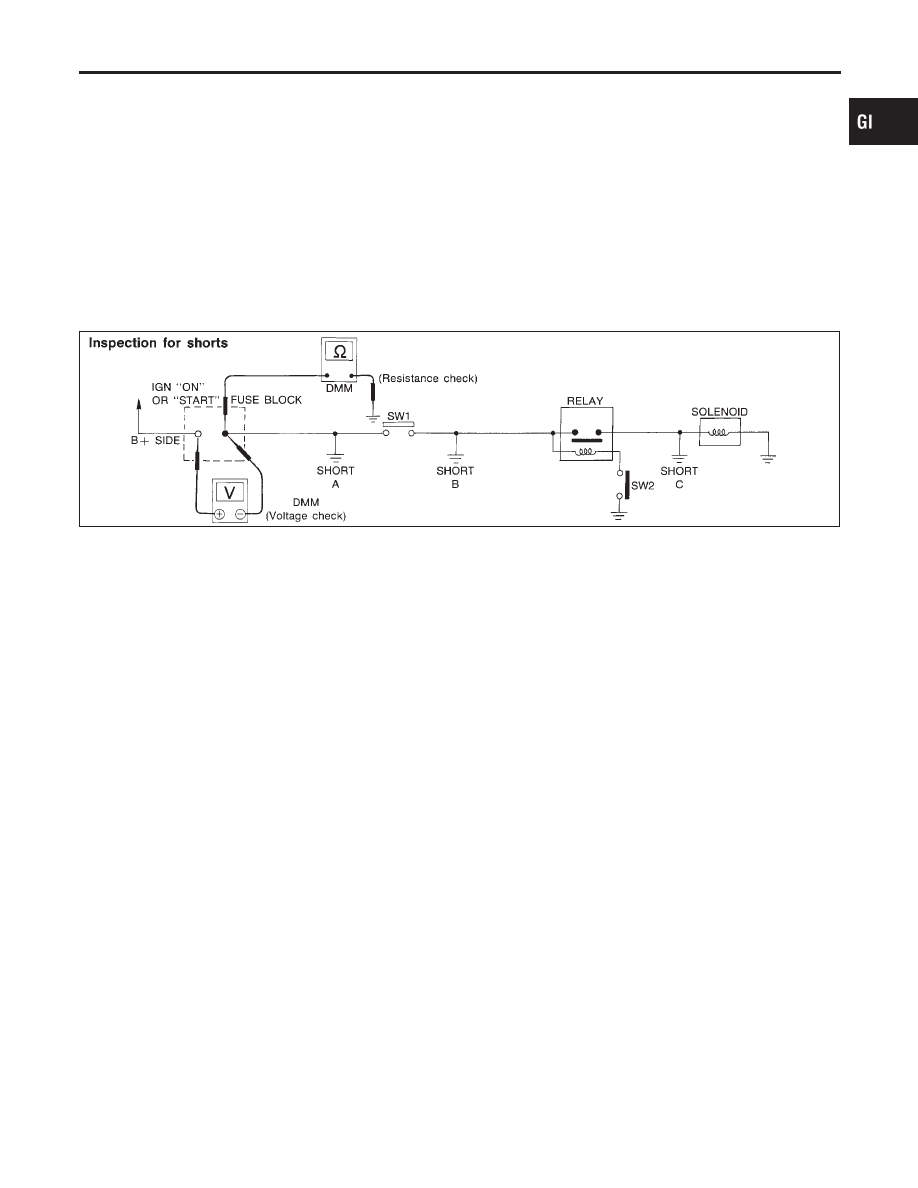Infiniti G20 (P11). Manual - part 411

voltage; open is further down the circuit than SW1.
no voltage; open is between fuse block and SW1 (point A).
4)
Close SW1 and probe at relay.
voltage; open is further down the circuit than the relay.
no voltage; open is between SW1 and relay (point B).
5)
Close the relay and probe at the solenoid.
voltage; open is further down the circuit than the solenoid.
no voltage; open is between relay and solenoid (point C).
Any powered circuit can be diagnosed using the approach in the
above example.
TESTING FOR “SHORTS” IN THE CIRCUIT
NCGI0005S0303
To simplify the discussion of shorts in the system please refer to
the schematic below.
SGI847
Resistance Check Method
1)
Disconnect the battery negative cable and remove the blown
fuse.
2)
Disconnect all loads (SW1 open, relay disconnected and sole-
noid disconnected) powered through the fuse.
3)
Connect one probe of the ohmmeter to the load side of the fuse
terminal. Connect the other probe to a known-good ground.
4)
With SW1 open, check for continuity.
continuity; short is between fuse terminal and SW1 (point A).
no continuity; short is further down the circuit than SW1.
5)
Close SW1 and disconnect the relay. Put probes at the load
side of fuse terminal and a known-good ground. Then, check
for continuity.
continuity; short is between SW1 and the relay (point B).
no continuity; short is further down the circuit than the relay.
6)
Close SW1 and jump the relay contacts with jumper wire. Put
probes at the load side of fuse terminal and a known-good
ground. Then, check for continuity.
continuity; short is between relay and solenoid (point C).
no continuity; check solenoid, retrace steps.
Voltage Check Method
1)
Remove the blown fuse and disconnect all loads (i.e. SW1
open, relay disconnected and solenoid disconnected) powered
through the fuse.
2)
Turn the ignition key to the ON or START position. Verify bat-
tery voltage at the B + side of the fuse terminal (one lead on
the B + terminal side of the fuse block and one lead on a
known-good ground).
3)
With SW1 open and the DMM leads across both fuse
terminals, check for voltage.
voltage; short is between fuse block and SW1 (point A).
no voltage; short is further down the circuit than SW1.
MA
EM
LC
EC
FE
CL
MT
AT
AX
SU
BR
ST
RS
BT
HA
SC
EL
IDX
HOW TO PERFORM EFFICIENT DIAGNOSIS FOR AN ELECTRICAL INCIDENT
Circuit Inspection (Cont’d)
GI-29